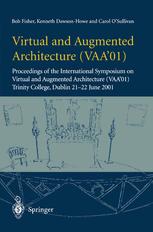

Most ebook files are in PDF format, so you can easily read them using various software such as Foxit Reader or directly on the Google Chrome browser.
Some ebook files are released by publishers in other formats such as .awz, .mobi, .epub, .fb2, etc. You may need to install specific software to read these formats on mobile/PC, such as Calibre.
Please read the tutorial at this link: https://ebookbell.com/faq
We offer FREE conversion to the popular formats you request; however, this may take some time. Therefore, right after payment, please email us, and we will try to provide the service as quickly as possible.
For some exceptional file formats or broken links (if any), please refrain from opening any disputes. Instead, email us first, and we will try to assist within a maximum of 6 hours.
EbookBell Team

4.0
16 reviewsThis book focuseson the use of computer visionand graphics in architecture. It arose from a convergenceof several hot topics: 1. visualization of built environments for engineering, historical and other purposes, 2. virtual reconstruction of architecture from visual data of existing struc tures, whether via photogrammetric or range sensing techniques, and 3. augmentation of video data of architecture with useful information. The focus here is on architecture and howto present it, enhance it's abilities, make it easier to understand and make it accessibleto a larger public. Collective interest in this topic led to the International Symposium on Virtual and Augmented Architecture, whose papers are contained in this book. As editors, we were very pleased about how well the different papers chosen gavea nice focus to the topic and conference.It is clear that there are many different research approaches still active in this area - this makes it an exciting time. Wehope that this book captures that excitement and succeeds in bringing it to you.